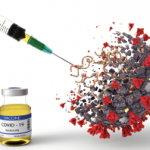The literature is littered with examples of the power of the placebo. One particularly remarkable example comes from a patient who was enrolled in a clinical trial. In the article’s abstract, the authors summarize his story as follows:
“We describe an individual who experienced unusual negative effects while taking a placebo during a clinical drug trial. A 26-year-old male took 29 inert capsules, believing he was overdosing on an antidepressant. Subsequently, he experienced hypotension requiring intravenous fluids to maintain an adequate blood pressure until the true nature of the capsules was revealed. The adverse symptoms then rapidly abated.”4
Medical students played a key role in the recognition of the placebo effect. In the 1930s, investigators developed a vaccine that seemed to prevent the common cold. When subjects who took the vaccine were compared with subjects who did not receive the vaccine, the vaccine seemed to result in a reduction in the frequency of upper respiratory tract infections. In 1938, the experiment was repeated in medical students; this time, the students who did not receive the vaccine received a capsule that was indistinguishable from the treatment—a placebo. Interestingly, the medical students who received the placebo also reported a reduction in upper respiratory tract infections, similar to the benefit previously attributed to the vaccine.5
The placebo effect may account for up to 35% of the benefit noted in placebo-controlled trials, depending on the endpoint in question.6 The placebo effect affects more than just patient-reported outcomes. In a meta-analysis of clinical trials of patients with rheumatoid arthritis who failed to respond to methotrexate and were subsequently randomized to a biologic agent or a placebo, the impact of the placebo on ACR20 scores at Week 24 was 24.7%.7 In a meta-analysis of children with non-systemic juvenile inflammatory arthritis, approximately one-third of the subjects demonstrated a therapeutic response to the placebo.8
Why is the placebo such an effective treatment? Part of the impact, as you would suspect, is psychological. One study, for example, found the placebo effect could be enhanced simply by telling the patient that you expected the drug would make them feel better.9 Other studies have demonstrated that color plays an important role: Marketers know that we expect our pain pills to be white. We associate yellow with antidepressants, red with stimulants and green with anti-anxiety medications. Drugs that follow these rules are generally deemed more effective, regardless of the chemical that lies beneath the painted shell. Even more interesting is the impact of hue: a brightly colored placebo will be judged more effective than a pill that uses muted tones.10


